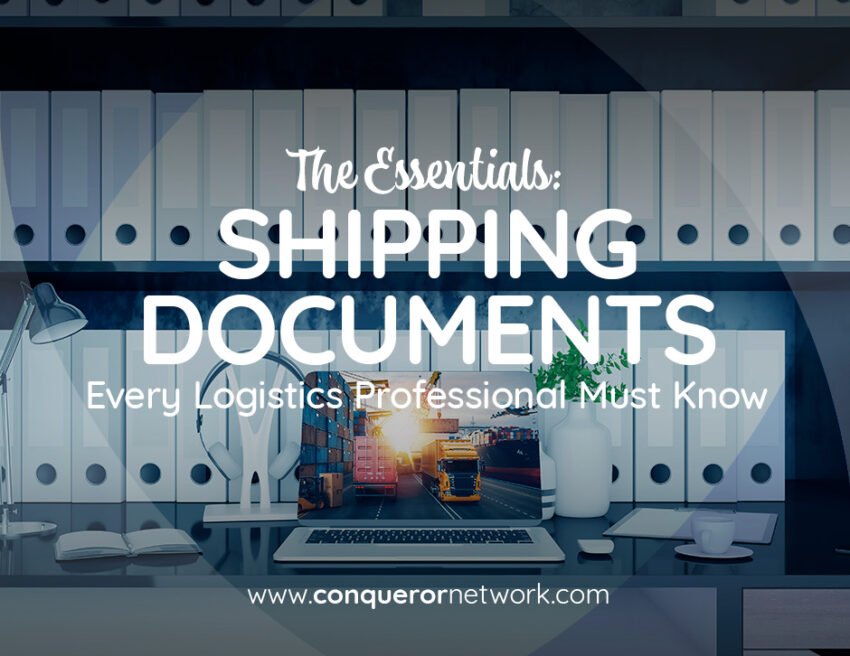In the transportation and logistics industry, proper documentation is the backbone of seamless global trade. Whether moving goods domestically or internationally, accurate and complete shipping documents ensure compliance, smooth customs clearance, and efficient delivery. A minor error in documentation can lead to costly delays, fines, or even confiscation of goods. Understanding these documents is crucial for freight forwarders, shippers, and logistics providers aiming to optimize their supply chain operations. This guide explores the essential shipping documents, their purpose, and why they are indispensable in the transportation and logistics sector.
The critical role of shipping documentation in transportation and logistics industry
Shipping documents create an auditable paper trail that protects all parties involved in a transaction. They serve three fundamental purposes: establishing legal ownership of goods, ensuring regulatory compliance, and enabling financial transactions. Customs authorities worldwide process billions of shipments annually, and proper documentation helps prevent bottlenecks at borders. Financial institutions rely on these documents to release payments under letters of credit, while logistics providers use them to properly handle and track cargo.

Core Shipping Documents Explained
-
Bill of Lading (B/L)
The Bill of Lading stands as the most vital document in international transportation and logistics industry. This tri-purpose document acts as a receipt confirming cargo acceptance, a contract outlining transport terms, and a title document that determines ownership. Shipping lines issue negotiable “order” bills of lading that function like checks payable to the bearer, while non-negotiable “straight” bills designate specific consignees.
-
Commercial Invoice
Commercial invoices provide the financial details of transactions, including product descriptions, quantities, values, and applicable trade terms. Customs agencies use these to assess duties and taxes, making absolute accuracy essential. The accompanying packing list details physical shipment characteristics – weights, dimensions, and packaging types – enabling proper handling and stowage.
-
Certificate of Origin
Certificates of Origin determine tariff eligibility under trade agreements, with chambers of commerce typically issuing these documents. Preferential certificates allow reduced duties under pacts like USMCA, while non-preferential versions simply confirm manufacturing location.
-
Packing List
The packing list provides a detailed breakdown of the shipment, including:
- Weight and dimensions of each package
- Number of cartons or pallets
- Description of contents per package
It is used by freight forwarders, customs officials, and warehouse operators to ensure accurate handling and verification of goods.
-
Air Waybills
Air shipments require Air Waybills – non-negotiable tracking documents that accompany goods from origin to destination. Ocean freight may use Sea Waybills for faster release at destination ports. Dangerous goods shipments mandate special declarations detailing hazardous materials and their proper handling procedures.
-
Letter of Credit (LC)
A Letter of Credit is a financial instrument issued by a bank guaranteeing payment to the seller, provided the terms of the LC are met. It serves as an assurance to exporters that they will receive payment upon presenting the required documents.
-
Insurance Certificate
An insurance certificate provides proof that the shipment is covered under a marine or cargo insurance policy. It outlines coverage details, including risks covered, insured value, and the policyholder. Having cargo insurance minimizes financial losses due to damages, theft, or loss during transit.
-
Dangerous Goods Declaration (DGD)
For hazardous materials, a Dangerous Goods Declaration is mandatory. It ensures compliance with international safety regulations, providing information about:
- Classification of hazardous goods
- Packaging and labeling requirements
- Emergency handling instructions
Failure to comply with dangerous goods regulations can lead to severe penalties and shipment rejections.
-
Importer Security Filing (ISF)
For shipments entering the United States, the ISF (or “10+2” filing) is a mandatory pre-arrival document. It must be filed with U.S. Customs and Border Protection (CBP) at least 24 hours before cargo is loaded onto a vessel bound for the U.S. It enhances supply chain security and ensures regulatory compliance.
-
Proforma Invoice
A Proforma Invoice is a preliminary document issued by the exporter before shipment. It outlines the estimated costs and details of the transaction, helping the importer secure financing and plan for customs duties.
-
Arrival Notice
The Arrival Notice is issued by the carrier or freight forwarder to inform the consignee of the shipment’s impending arrival. It provides essential details such as estimated time of arrival, terminal location and freight charges due (if any). Consignees use this document to arrange customs clearance and final delivery of goods.
Best practices for managing shipping documents in the transportation and logistics industry
Given the complexity and volume of shipping documents, following best practices can significantly enhance efficiency and compliance in the transportation and logistics sector.
Ensure Accuracy and Consistency
Discrepancies between documents can result in customs delays or penalties. Ensure that all details, including product descriptions, HS codes, and values, match across invoices, packing lists, and certificates.
Digitize and Automate Documentation
Many logistics companies are adopting digital solutions for document management. Electronic Bills of Lading (eB/L), automated customs filing, and cloud-based document storage help improve accuracy and accessibility.
Stay Updated on Regulatory Changes
Trade regulations are constantly evolving. Keeping up with the latest import/export requirements, tariff classifications, and documentation rules helps businesses avoid compliance issues.
Collaborate with Reliable Freight Forwarders
Experienced freight forwarders have in-depth knowledge of international documentation requirements. Partnering with a trusted logistics provider can streamline document processing and reduce the risk of errors.
Wrapping Up
Shipping documents play a crucial role in ensuring smooth global trade and efficient supply chain operations. In the transportation and logistics sector, understanding these documents is essential for freight forwarders, shippers, and consignees to prevent delays, avoid penalties, and facilitate seamless cargo movement. By adhering to best practices and leveraging digital solutions, businesses can enhance compliance and operational efficiency, strengthening their position in the competitive global market.


